|
Here is a revised version of the Plop-in-the-Box that should provide a more open, detailed sound than the original, thanks to a lower crossover point. I had not realized the Neo planar tweeter could be crossed as low as 2000 Hz, and doing so definitely makes for a more enjoyable speaker. The Plop-in-the-Box is designed for enthusiasts who want a high quality, interesting, and not terribly expensive design -- but who can't or don't want to build their own cabinets. It is intended for use with the excellent new Parts Express .375 cu. ft. finished cabinet.
I have chosen drivers that are meant to be surface mounted. No routing is required or even desirable. Just cut two holes and plop in one of GR Research's M130 shielded or unshielded woofers, and a BG Neo 3 PDR planar tweeter (with face plate), also available from GR Research. The Neo tweeter provides very open, detailed sound that is as good or better than the OW1 above 10 kHz. And it costs almost $30 less.
Cut the holes so that the center-to-center distance between the tweeter and woofer is from 5-3/4 inches to 6 inches. The drivers may be centered both vertically and horizontally on the front baffle. The port goes on the back opposite the tweeter center and should be 1-3/4 inches by 4 inches.
Here are my measurements. The Neo 3's on-axis response has quite a few diffraction hills and valleys, but these smooth out off axis.
Response at 15 degrees off axis horizontally:
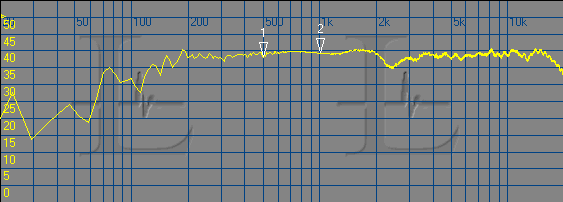
Response at 40 degrees off axis:
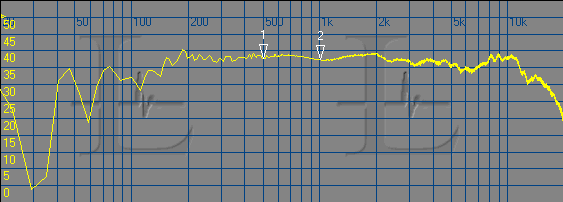
Finally, here is a plot that shows the superb vertical dispersion of the Neo3 planar. There is a tendency to associate limited vertical dispersion with planar and ribbon drivers, but this is only true for the longer units that are capable of low crossover points. The Neo3 is essentailly perfect in its vertical dispersion behavior, as the following graph illustrates. The measurement is taken with the low pass filter disconnected, but with the high pass filter in line, and with the mic simulating a 6-foot tall listener standing a few feet back from a speaker on a 24" stand. With the low pass filter engaged, there is a depression around the crossover region (as there will be for most similar designs with or without planar tweeters), but this has nothing to do with the high frequency dispersion of the Neo3.
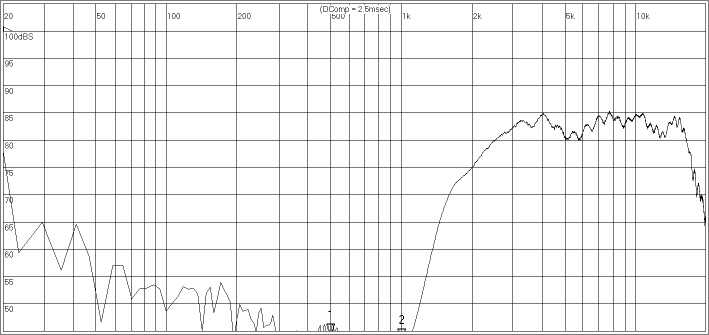
Here is the woofer circuit. The little resistors in line with the two series inductors don't really exist. They represent the dcr of the 16 Ga coil. Don't forget the final impedance compensation circuit consisting of the 8 ohm resistor and 8 uf capacitor. You can wire that circuit directly across the woofer terminals to save space on the board.
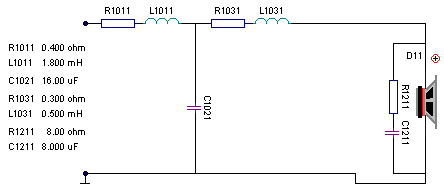
Here is the tweeter circuit.
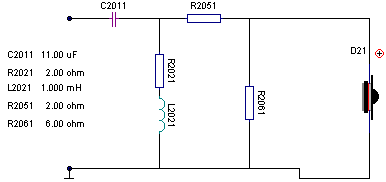
| 
